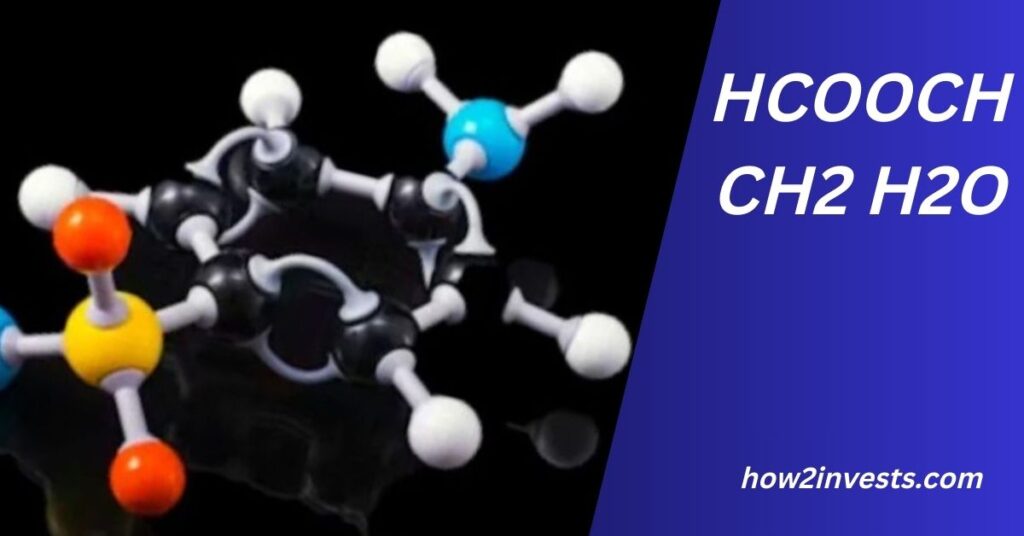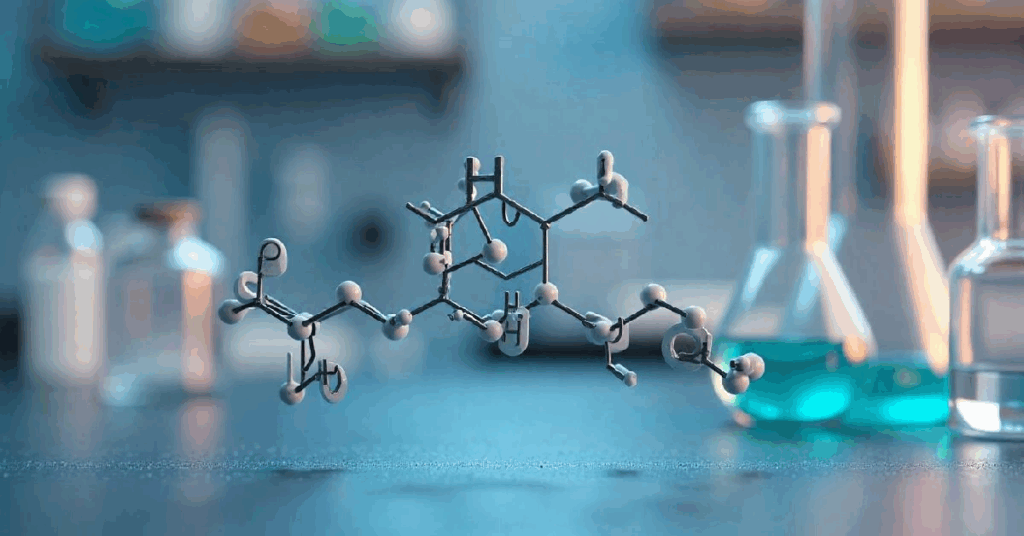HCOOCH CH2 H2O: Understanding Its Chemistry, Applications, and Implications

In the world of chemistry, compounds with multiple functional groups often serve as important building blocks for various reactions and industrial processes. One such compound is HCOOCH CH2 H2O, a mixture that includes formic acid (HCOOH), methyl ester (HCOOCH2), and water (H2O). This compound, though not as commonly discussed as some others, plays a significant role in a variety of chemical applications, from catalysis to material synthesis.
This article will delve into the chemistry of HCOOCH CH2 H2O, examining its structure, reactivity, and importance in industrial applications. We will also explore its role as a hydrogen donor, its interaction with metal catalysts, and the broader implications of its usage in chemical processes.
What is HCOOCH CH2 H2O?
HCOOCH CH2 H2O is a mixture consisting of three primary components:
- Formic Acid (HCOOH) – A simple carboxylic acid known for its ability to act as a reducing agent.
- Methyl Ester (HCOOCH2) – A formate ester that is often used in chemical synthesis and as a solvent.
- Water (H2O) – A ubiquitous solvent that facilitates a wide range of chemical reactions.
When combined, these elements form a versatile compound that has many applications, particularly in the fields of catalysis and organic synthesis.

The Structure of HCOOCH CH2 H2O
The structure of this mixture can be broken down as follows:
- Formic Acid (HCOOH): This molecule consists of a carboxyl group (-COOH), which is known for its ability to donate hydrogen ions (protons) in chemical reactions.
- Methyl Ester (HCOOCH2): This is a methyl ester derivative of formic acid, where the hydrogen of the carboxyl group is replaced by a methyl group (CH3). This ester group plays a significant role in esterification reactions and can be involved in various organic synthesis processes.
- Water (H2O): Water acts as a solvent in this mixture, aiding the dissolution and interaction of other components.
When combined in a mixture, HCOOCH CH2 H2O provides a versatile environment for chemical reactions, offering opportunities for the reduction of metal catalysts or organic substrates, as well as a medium for hydrogen transfer.
Also Read: NLPadel: Revolutionizing Padel in the Netherlands
Chemical Properties and Reactivity
The chemical properties of HCOOCH CH2 H2O make it particularly interesting in various chemical processes. Let’s break down the key reactivity features:
Hydrogen Donation
One of the most important aspects of HCOOCH CH2 H2O is its ability to serve as a hydrogen donor. Formic acid (HCOOH) is well known for its role in donating hydrogen atoms (H+) in reactions. This makes HCOOCH CH2 H2O useful in various catalytic processes, particularly in the reduction of metal catalysts or organic substrates. In this way, formic acid acts as a reducing agent, facilitating the reduction of other compounds in the reaction.
Ester Hydrolysis
The ester group (HCOOCH2) is prone to hydrolysis when exposed to water (H2O), resulting in the formation of formic acid (HCOOH) and methanol (CH3OH). This hydrolysis reaction can be catalyzed by either acidic or basic conditions, and it plays a key role in various industrial applications, particularly in the synthesis of other chemicals and materials.
Metal Catalyst Interaction
HCOOCH CH2 H2O can interact with metal catalysts, facilitating certain reactions such as hydrogenation or reduction reactions. The hydrogen donor capabilities of formic acid make this mixture useful in catalytic hydrogenation processes, where hydrogen is transferred to organic molecules, leading to the reduction of bonds or the addition of hydrogen to unsaturated compounds.
Solvent Properties
Water, being an essential solvent in this mixture, helps in the dissolution of various compounds, enabling the chemical interactions between formic acid and other reactants. Water is also crucial for facilitating ester hydrolysis, as mentioned earlier.
Applications of HCOOCH CH2 H2O in Industry
HCOOCH CH2 H2O has several industrial applications, particularly in the fields of chemical synthesis, material production, and catalysis. Below are some of the key areas where this mixture is used:
1. Catalysis in Organic Synthesis
In organic chemistry, HCOOCH CH2 H2O is widely utilized as a reducing agent in catalytic reactions. The ability of formic acid (HCOOH) to donate hydrogen atoms makes it an effective catalyst in hydrogenation reactions, where organic molecules undergo reduction to form more saturated compounds. This is particularly useful in the production of pharmaceuticals, agrochemicals, and petrochemical products.
Also Read: ReadMyManga com: Your Ultimate Manga Destination
2. Hydrogenation and Reduction Reactions
Formic acid’s hydrogen-donating ability is crucial in hydrogenation reactions, which are used to convert unsaturated compounds (like alkenes and alkynes) into saturated hydrocarbons. This process is important in the production of various chemicals, including biodiesel and high-value chemical intermediates.
3. Polymer Synthesis
In polymer chemistry, HCOOCH CH2 H2O can be used in the synthesis of various polymers, particularly in reactions that involve ester linkages. The esterification of formic acid with alcohols can produce biodegradable polymers, which are increasingly sought after due to their eco-friendly properties.
4. Metal Catalyst Reduction
The reducing properties of formic acid make HCOOCH CH2 H2O effective in reducing metal catalysts or metal salts to their metallic forms. This is particularly important in catalytic processes, where metal catalysts are required to activate reactants or facilitate specific chemical transformations.
5. Solvent in Chemical Reactions
As a solvent, HCOOCH CH2 H2O is used to dissolve reactants in chemical reactions. Water, as the primary solvent, ensures that reactants can mix uniformly and react efficiently, especially in processes such as esterification and hydrolysis.
Advantages of Using HCOOCH CH2 H2O
- Cost-Effectiveness: Formic acid is relatively inexpensive and easily accessible, making HCOOCH CH2 H2O a cost-effective option for various industrial applications.
- Eco-Friendly: The mixture’s ability to facilitate hydrogenation reactions and reduce metal catalysts makes it a greener alternative to more toxic or environmentally harmful chemicals.
- Versatility: The ability to act as both a solvent and a reducing agent makes HCOOCH CH2 H2O highly versatile, allowing it to be used in a range of chemical processes.
Also Read: Programgeeks. net: Your Ultimate Guide to Coding, Software Reviews, and Programming Resources
FAQs
What is HCOOCH CH2 H2O used for?
HCOOCH CH2 H2O is primarily used in organic synthesis, catalysis, and hydrogenation reactions. It serves as a hydrogen donor and is involved in metal catalyst reduction and ester hydrolysis.
How does HCOOCH CH2 H2O function as a reducing agent?
The formic acid component of HCOOCH CH2 H2O acts as a hydrogen donor, providing hydrogen atoms (protons) that are used to reduce metal catalysts or organic compounds.
What is the role of water in HCOOCH CH2 H2O?
Water serves as a solvent, enabling the dissolution of reactants and facilitating reactions such as ester hydrolysis, which leads to the formation of formic acid and methanol.
Can HCOOCH CH2 H2O be used in polymer synthesis?
Yes, the esterification reactions involving HCOOCH CH2 H2O can be used to create biodegradable polymers, contributing to environmentally sustainable materials.
How is HCOOCH CH2 H2O involved in catalysis?
HCOOCH CH2 H2O plays a significant role in catalysis by reducing metal catalysts and enabling reactions that require the donation of hydrogen, such as hydrogenation.
Conclusion
HCOOCH CH2 H2O is a chemical mixture that holds great potential in a variety of industrial processes. From its ability to act as a hydrogen donor to its role in catalysis, esterification, and polymer synthesis, this compound serves as a versatile and eco-friendly alternative in many chemical applications. Understanding its structure, reactivity, and applications allows industries to harness its full potential for sustainable and efficient chemical processes.
This compound’s role in hydrogenation and reduction reactions further highlights its importance in fields like pharmaceuticals, agrochemicals, and materials science, making HCOOCH CH2 H2O an essential tool in the modern chemical industry.




